Roots, Shoots, and Plants, Oh My!

This module allows students to learn about the two major systems in a plant: the root system and the shoot system. Students will learn about the structure and function of the root and shoot system. They will also color a diagram of the plant’s root and shoot system to familiarize themselves with the parts of the plant. Students will do two hands-on science experiments to learn about root and shoot systems. In the first experiment, students will use a celery stalk to create an amazing visual of how water moves through plants. Lastly, students will grow their very own plant from a seed! This lesson will spark a student’s curiosity and provide several meaningful experiences with life science!
After this module you will be able to:
- Describe the functions and structure of the root and shoot system.
- Explain the process of water movement through the plant root and shoot system.
- Design an experiment to show the movement of water through the plant xylem.
- Demonstrate knowledge of plant growth by growing a plant from a seed.
- Make observations of a seedling as it grows into a plant.
- Grade 7.12(A): Investigate and explain how internal structures of organisms have adaptations that allow specific functions such as xylem in plants.
- Grade 9.10(B): Describe the interactions that occur among systems that perform the functions of transport in plants.
Next Generation Science Standards (NGSS)
- DCI: Structure and Function LS1.A. Plants also have different parts (roots, stems, leaves, flowers, fruits) that help them survive and grow.
Materials
- Plant Student Handout
- Plant Observation Journal
- 2 pinto beans
- 1 Ziploc bag
- 1 paper towel
- Spray bottle for holding water
- 1 clear cup (large enough to hold 8 oz. of water)
- 1 fresh stalk of celery with leaves
- 1 cup of water
- Food color (any color)
- Scissors or knife to cut celery
Safety
- Do not consume any of the materials used in this lab at any point!
- Have an adult cut any necessary materials such as the celery.
- Roll back sleeves and tie back your hair before completing lab experiments.
- Do not directly smell anything, use a wafting motion to smell any substances in the experiment.
Activity
Want to see how water travels up the shoot system? Try this activity as well! You will use the celery as the shoot system and colored water to see water moving up the celery as you conduct your experiment.
Steps
- Watch the video.
- Gather your materials: celery stalk, clear container to hold the celery, water, and food coloring.
- Have an adult cut about 1-2 inches off the end of the celery, keeping the leafy part of the celery attached.
- Fill a clear container halfway with about 1 cup of water.
- Add 4-5 drops of food coloring and stir for 10-15 seconds.
- Place the stalk of celery in the colored water.
- Observe the water traveling up the shoot system over the course of a few days!
Dig Deeper
Read More
Now that you have tried the experiment with the celery, you have an idea of what happens to the water over the course of a few days. The Xylem and Phloem are evolutionary vascular tissues found in a plant, and they are critical for transportation of water and sugars. The Xylem mostly transports water and minerals from the roots UP, against gravity. Xylem also helps plants to grow tall, an important feature in a plant competing for more sunlight to go through photosynthesis. The tissue known as Phloem distributes amino acids and sugars, products of photosynthesis, DOWN the plant. The Phloem transports the sugars from the leaf cells, where it received the sunlight, to the root cells or developing flowers and buds, which did not receive the sunlight. Both vascular tissues are important for photosynthesis. If these vascular tissues were to be damaged, they would not receive the necessary substances to carry out photosynthesis. For example, if the Xylem were removed there would be no transportation of water, and this would cause the leaves to wilt also causing the plant to die. Yikes! Remember that Xylem goes up, and Phloem goes down!
Try This
Color Plant Diagram & Seed Growth
You will become a botanist (a scientist who studies plants) and grow your own plant! Once you have gathered your materials, plant your bean and watch it grow! Over the course of a few days, make as many observations as you can and record them on your Plant Observation Journal.
Before you begin growing your plant, print and color the plant diagram. You will use this diagram to help you identify parts of your plant as it grows.
- Take your spray bottle and lightly dampen a paper towel with water.
- Next, gently insert the wet paper towel inside of a Ziploc bag.
- Now, place 2 beans on top of the wet paper towel (be sure to spread them far apart).
- Seal the Ziploc bag.
- Place the Ziploc bag in an area of your home that receives plenty of sunlight (near a window is a good place).
- Twice a day, spray your paper towel so it does not dry out.
- Watch your plant grow over the next few days.
- Each day, write your observations on your Plant Observation Journal. Be sure to note any changes you notice. Record your observations and take lots of pictures to document these changes.
Watch This
- View this video after you have colored your plant and see if you can find the parts of the plant you colored in the video.
- Can plants think? Check this video out to find out!
- Do plants eat? If you want to find out the answer, watch this video.
- Hey, don’t touch my plant! Learn how plants defend themselves and avoid attacks from predators and other animals.
- Where do plants seed come from? To solve this mystery, check out this short video.
- Can plant scientists save the world? Meet a botanist who is helping save the planet with plants!
Show What You Know
Meet Our Expert
Ever thought about a career in STEM? Listen to members of the lab of Weiyi Peng, Ph.D., in the Department of Biology & Biochemistry at University of Houston explain the cancer research going on in the lab and share advice on how to start a career in the STEM fields.
Meet The Teachers
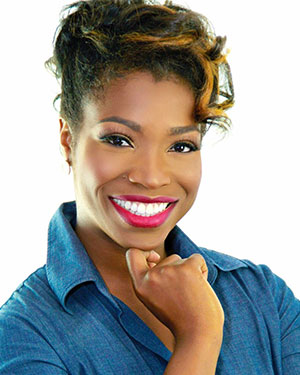
Uchenna Emenaha
Ph.D. Curriculum & Instruction in Science Education, University of Houston
Uchenna Emenaha obtained her Ph.D. in science education from the University of Houston.
She currently is an instructor in the teachHOUSTON Program teaching preservice STEM teachers. Her areas of research interest
are STEM Education, Science Education and Social Justice Education. Prior to joining
the teachHouston staff, she spent nine years teaching middle school and high school
science. She is also a health enthusiast who teaches Zumba Fitness classes in her
spare time and volunteers with Houston Health and Black Business Expo. She loves science
and is passionate about sharing her love of science with students of all ages.
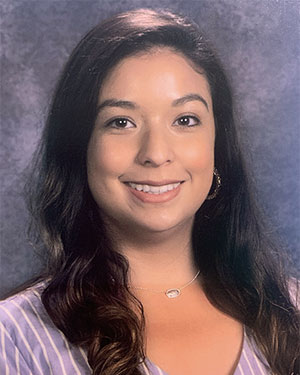
Arianna Ibarra
Biology with teachHOUSTON
Arianna is a 2018 graduate of the University of Houston. She obtained her degree in
Biology and is also an alumna of the teachHOUSTON Program. She is currently a Biology teacher at South Houston High School and
is pursuing her master’s degree in STEM Education through Texas Tech University. This
is Arianna’s third summer to participate in STEM camps at UH, and she is excited to
work with students and teachHOUSTON undergraduates as a camp leader. In her free time, Arianna enjoys attending
baseball games for the Houston Astros-Go Astros!

Ricardo Pocasangre
Biology with teachHOUSTON
Ricardo is a senior at the University of Houston majoring in Biology. Upon graduating,
he wants to become a high school science teacher. He loves to study the stars and
spends time looking into the sky with his high-powered telescope. He is excited to
be working with you this summer!
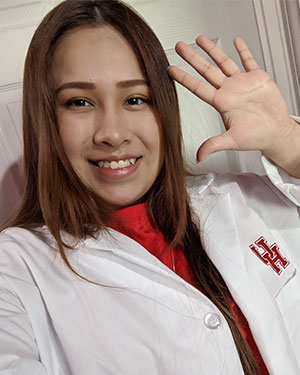
Frida Villalobos
Biology with teachHOUSTON
Frida is currently a student at the University of Houston majoring in Biology. She
aspires to be a biology professor, who not only teaches, but also studies in a laboratory
setting. She loves science, coffee, and meeting new people and hopes to one day open
a science-themed coffee shop! In her free time, she enjoys reading books, listening
to music, or watching a show on Netflix.
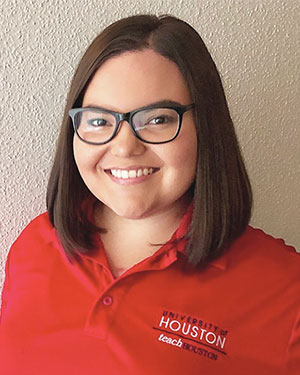
Fernanda Marrero Hi
Biology with teachHOUSTON
Fernanda is a senior at the University of Houston and very active in the UH community.
She is a Hispanic Scholarship Fund Scholar, Noyce Scholar, Charles Butt Scholar, and
President of the teachHOUSTON Student Society. She is invested in the advancement of public education and
advocates for social justice in and out of the classroom. Her ultimate goal is to
be a public school teacher or an administrator. During her free time, she enjoys reading
and playing her Nintendo Switch.
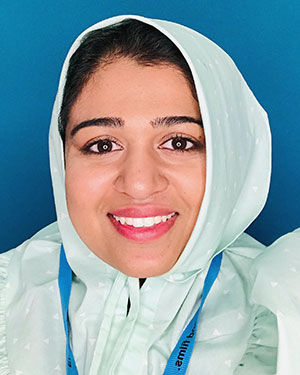
Khadija Juzar Lokhandwala
Biology with teachHOUSTON
Khadija is a junior at the University of Houston majoring in Biology and minoring
in Business Administration. She loves to teach and hopes to one day complete her Ph.D.
and become an Anatomy and Physiology professor. She is passionate about increasing
female participation in STEM. An artist at heart, in her free time she likes to draw,
create fun looks with makeup, and play sports.
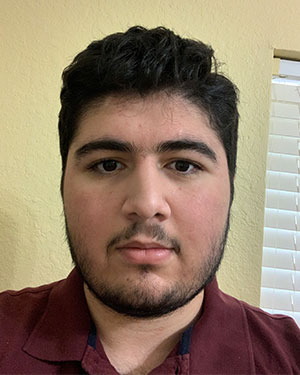
Sajjad Razzaq
Biology with teachHOUSTON
Sajjad is a biology major who loves learning about health and science. He aspires
to be a health science educator or a doctor upon graduation. He loves to play video
games and likes to draw in his free time. He believes that learning should be fun
and is excited to be a part of the virtual summer camp with the teachHOUSTON Program.

Liandra Larsen
teachHOUSTON STEM Interactive Video Editor
Liandra is a Research Graduate Assistant for the teachHOUSTON Program. Currently, she’s pursuing her Ph.D. in Higher Education Leadership
and Policy Studies at the University of Houston. Her research interests include improving
the university experience for first-generation and transfer students. In her spare
time, she enjoys dancing, binge-watching shows on Netflix, and overspending at Target.